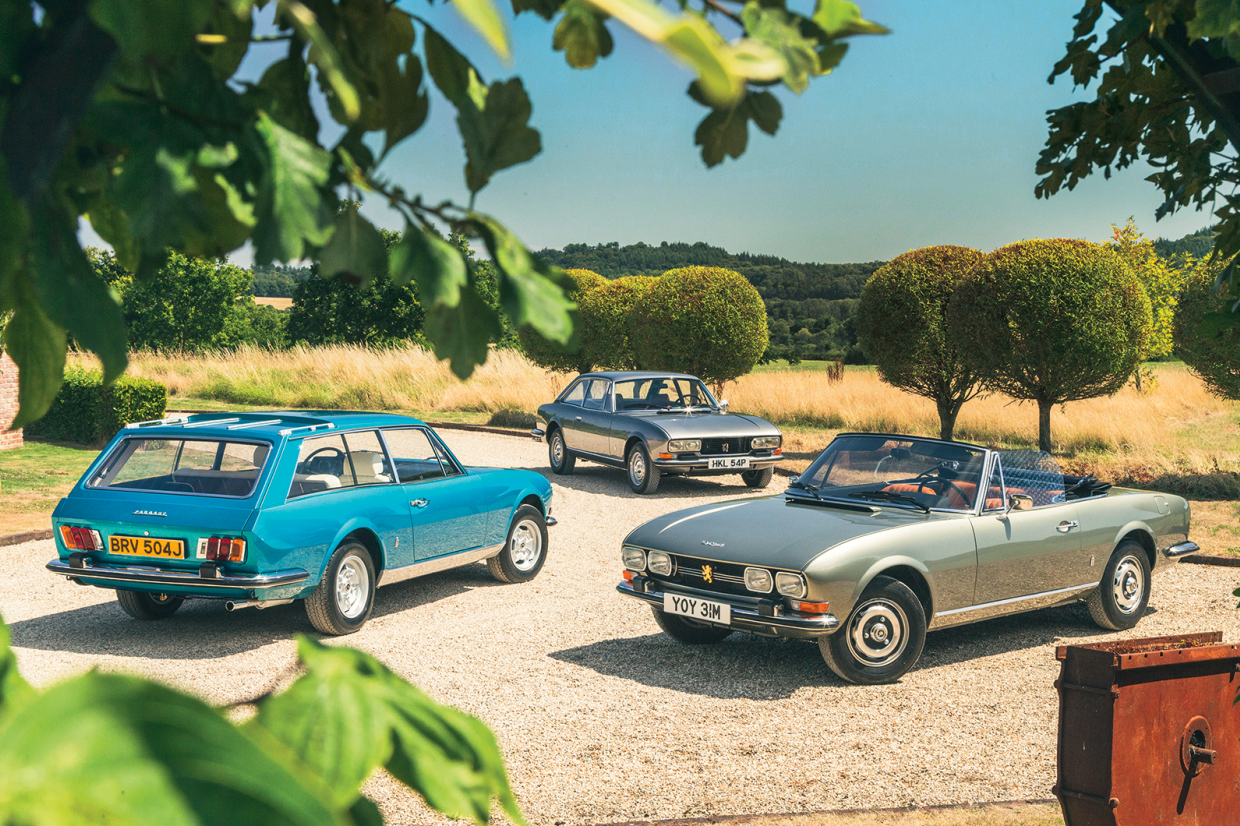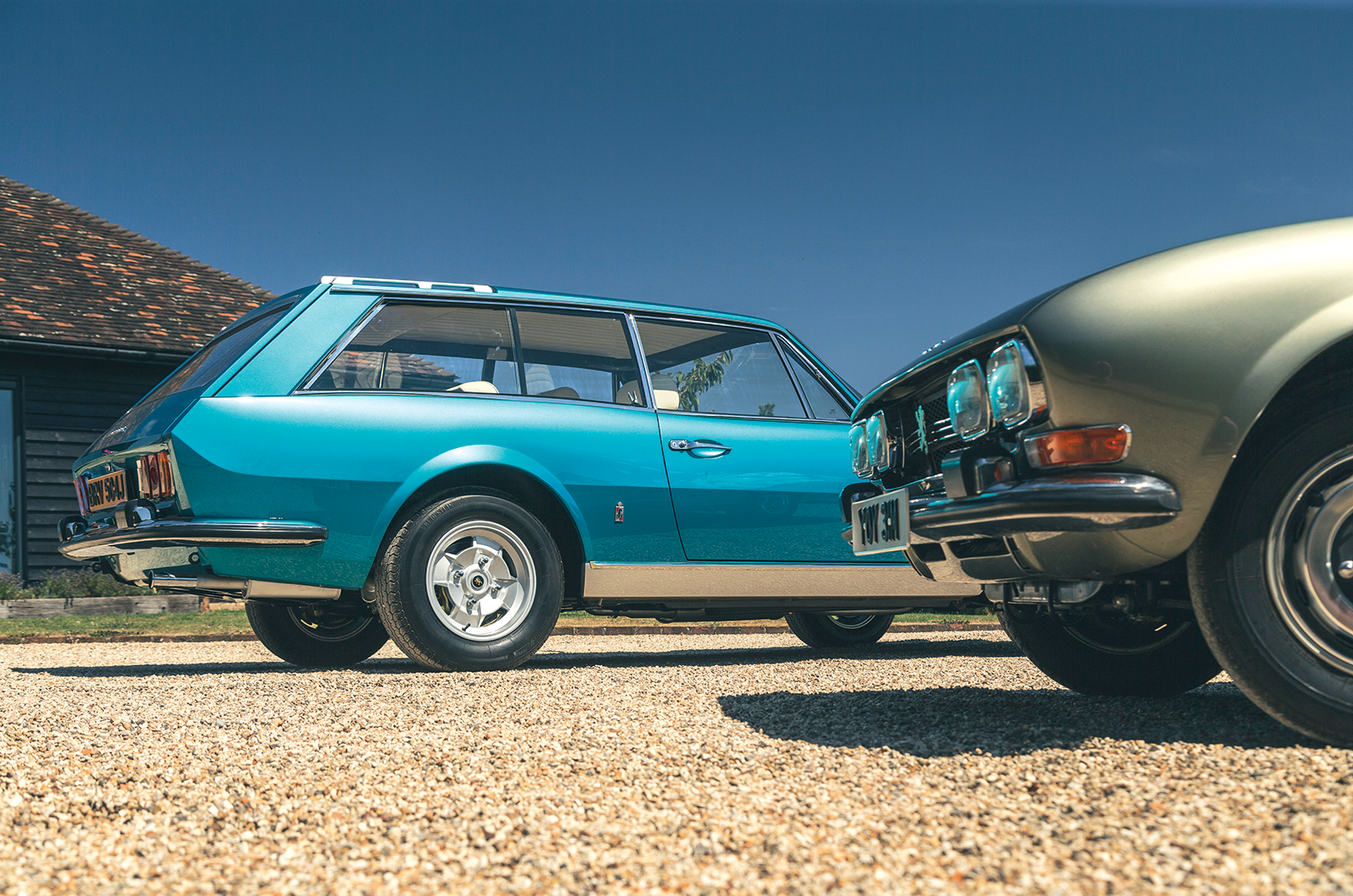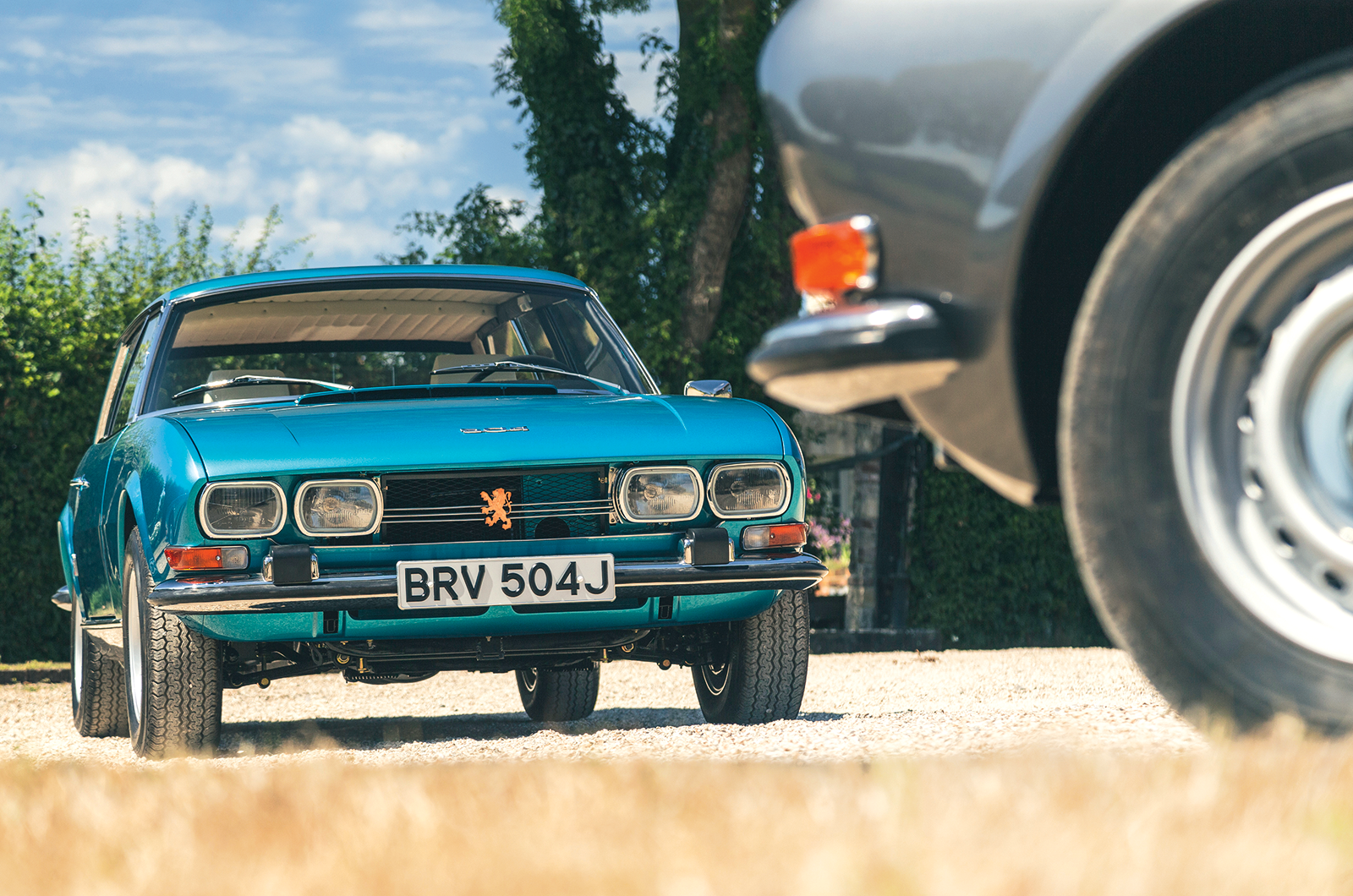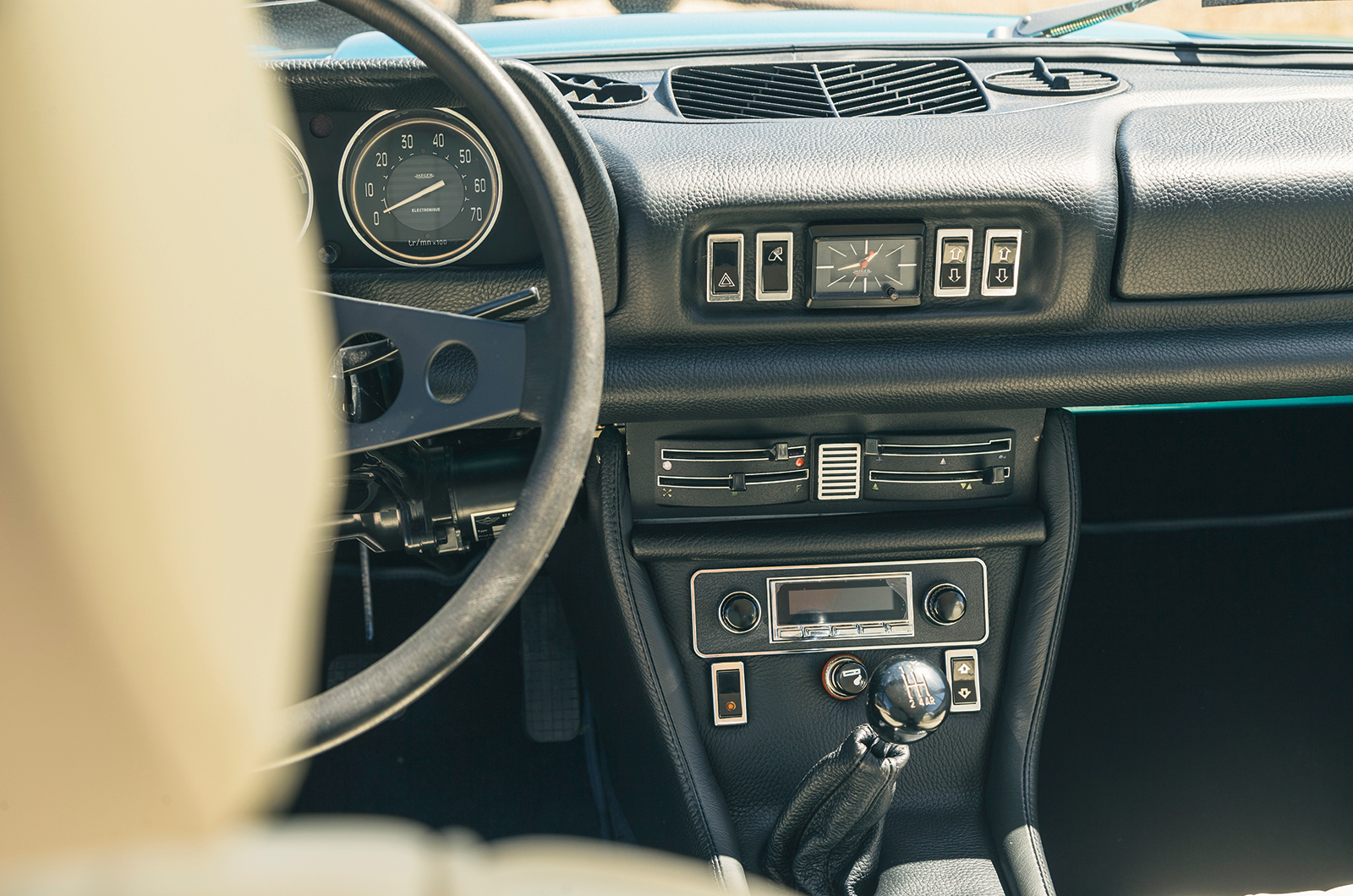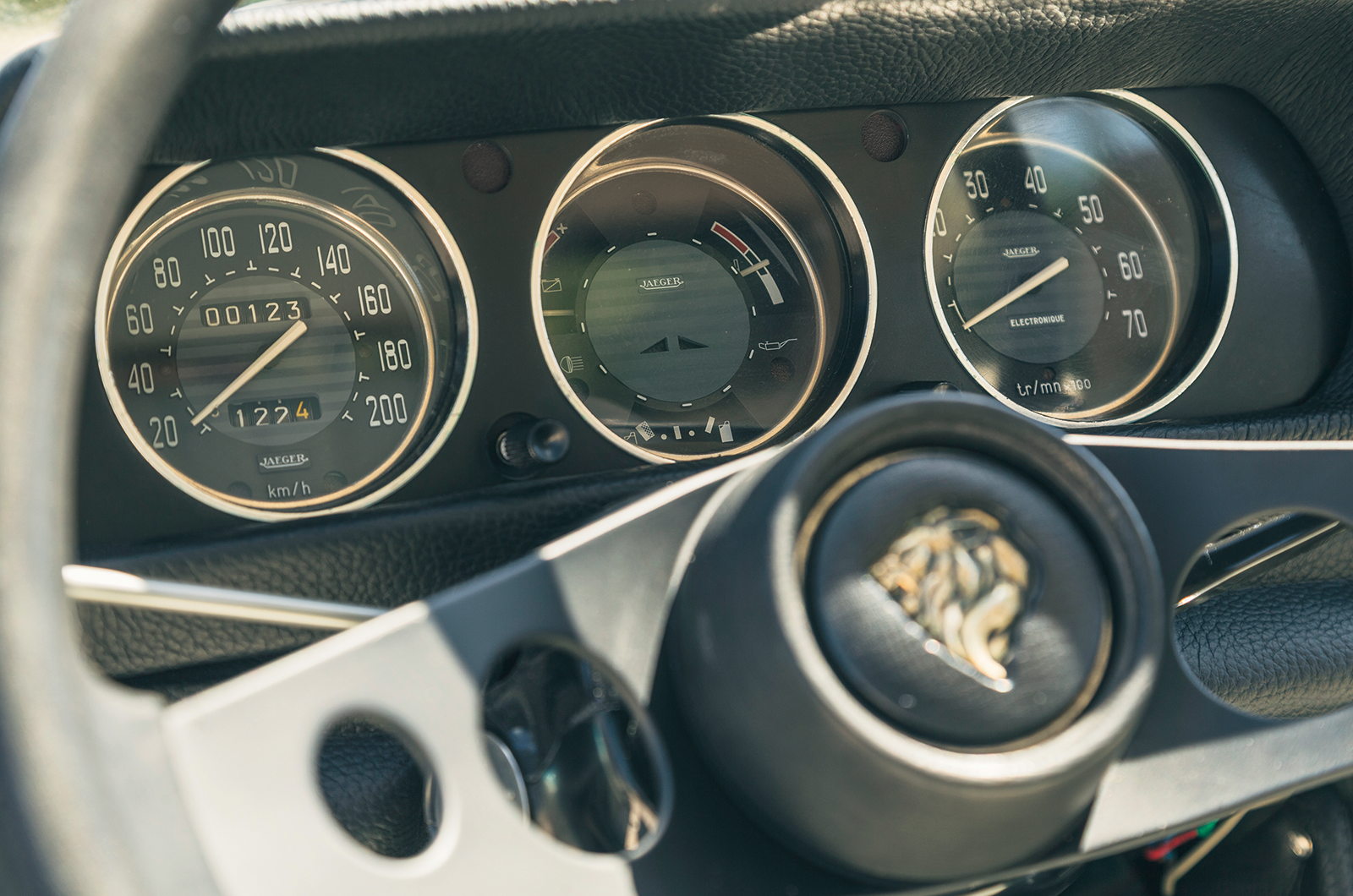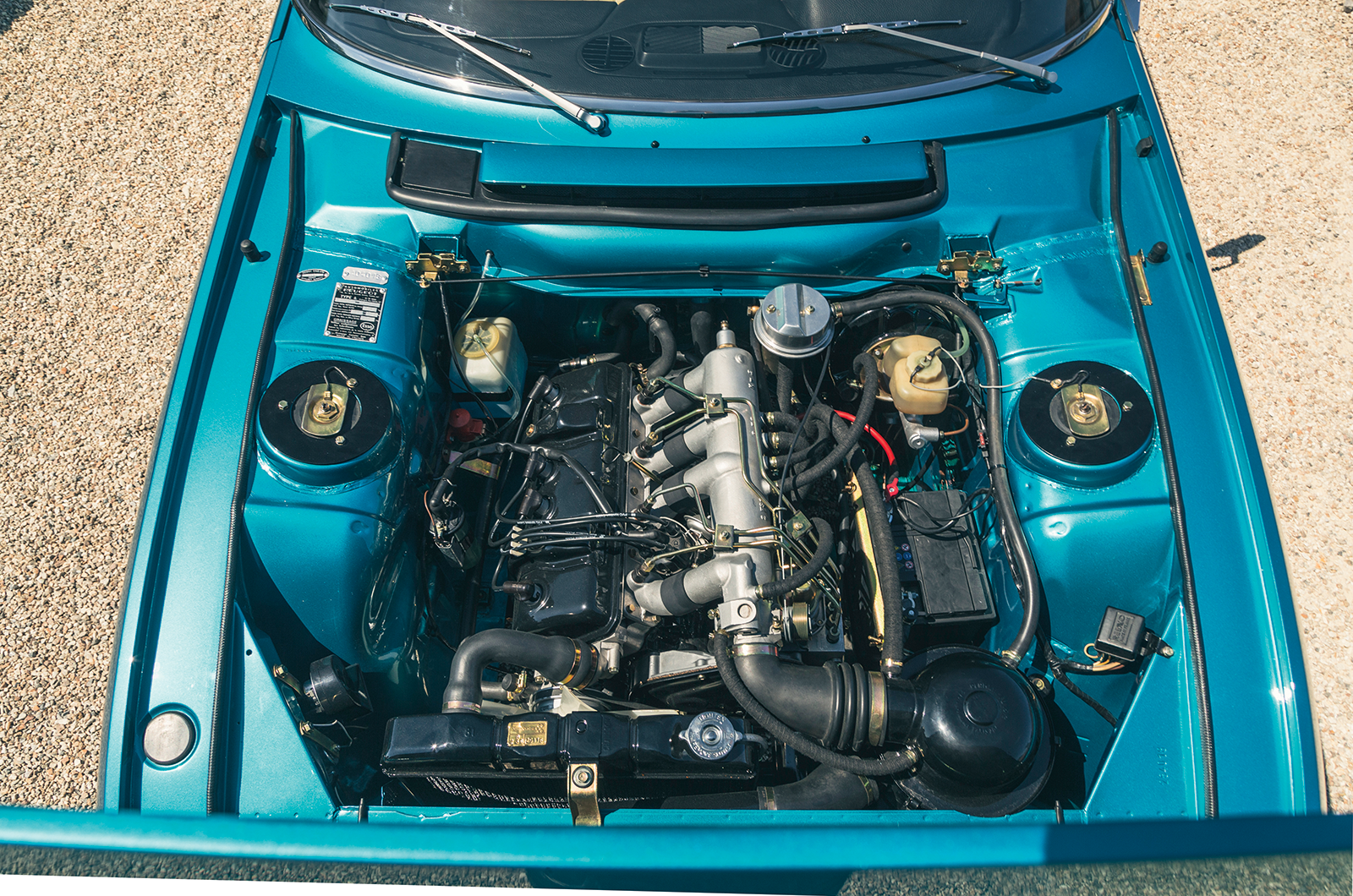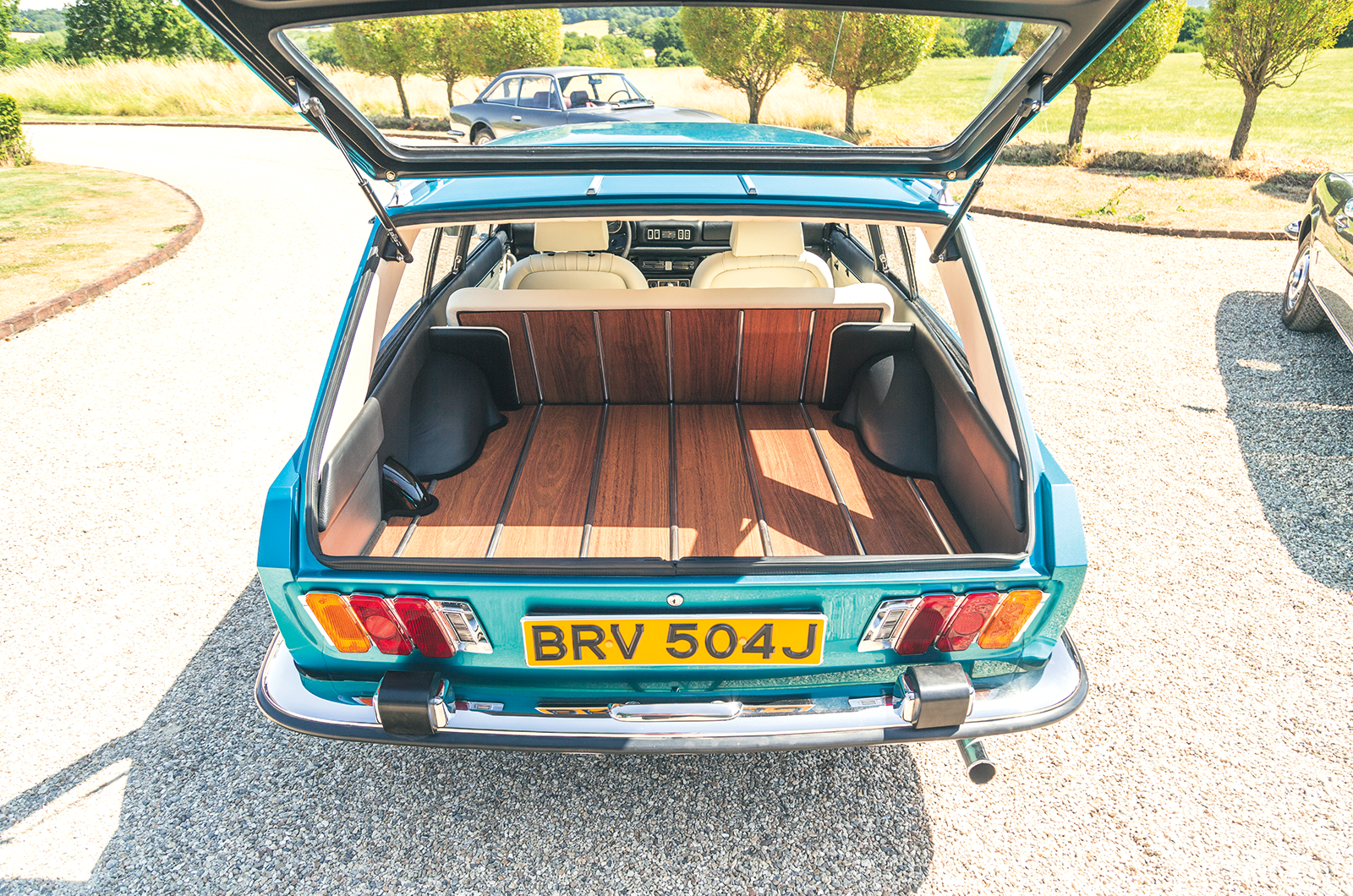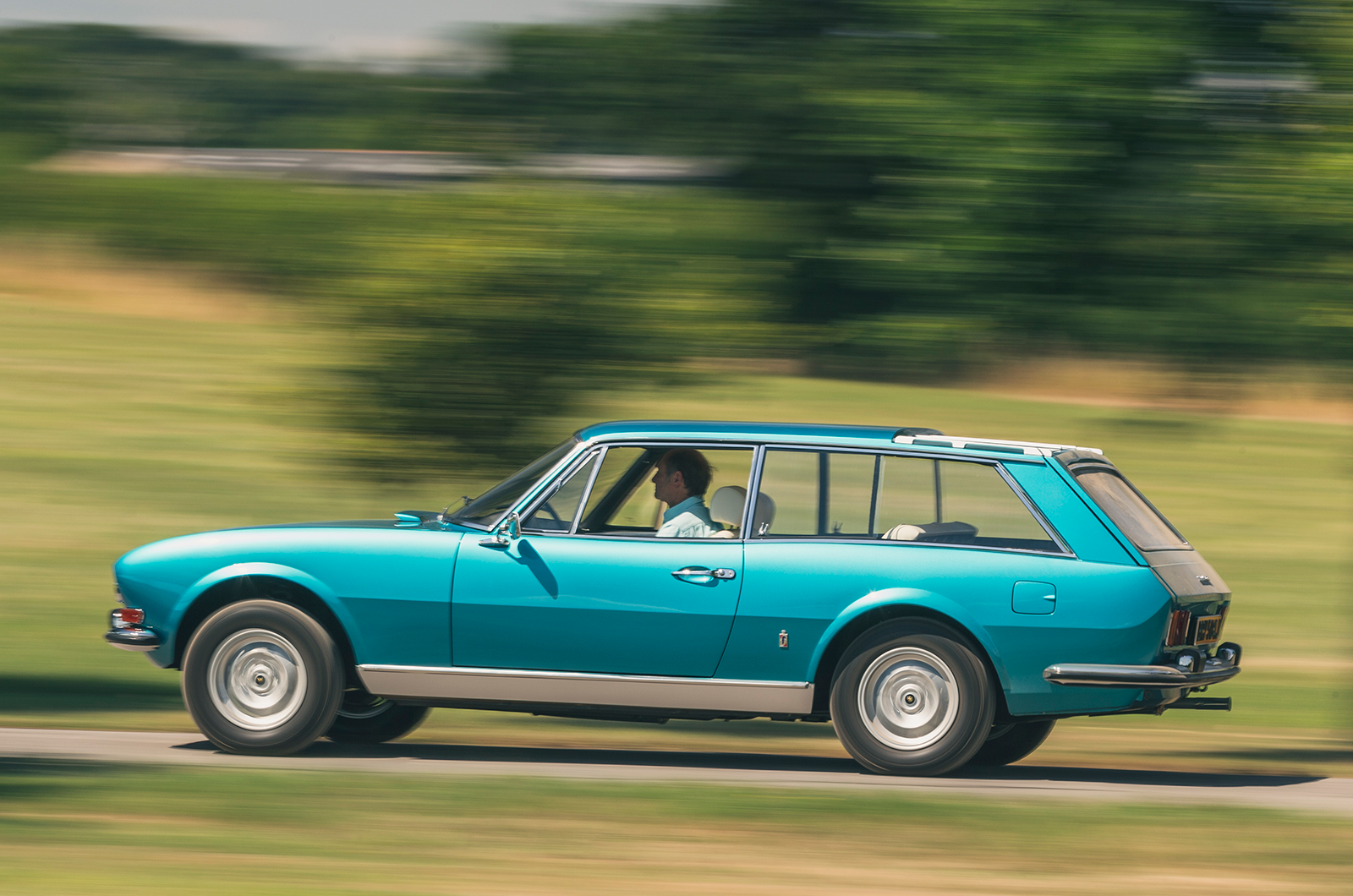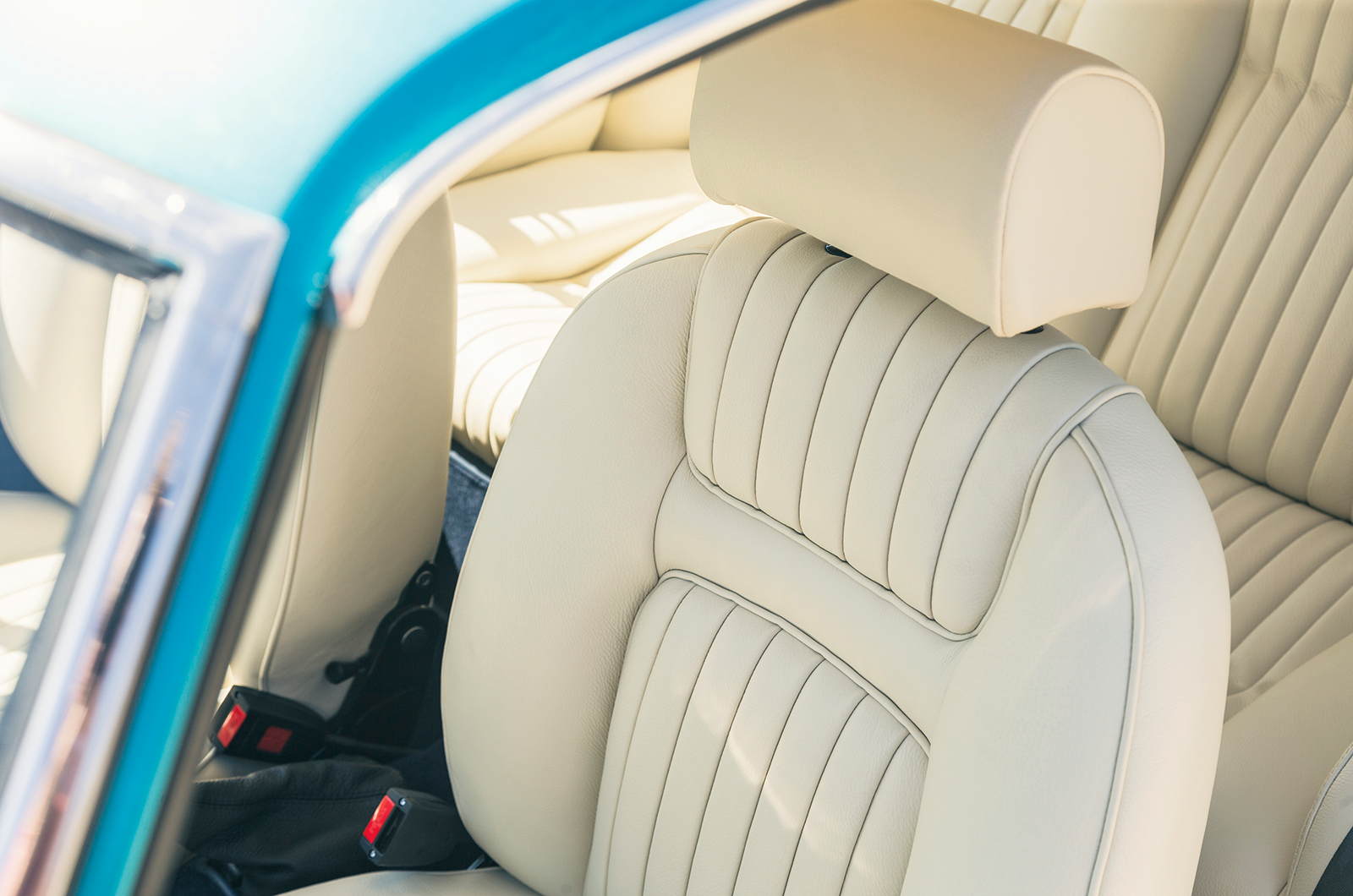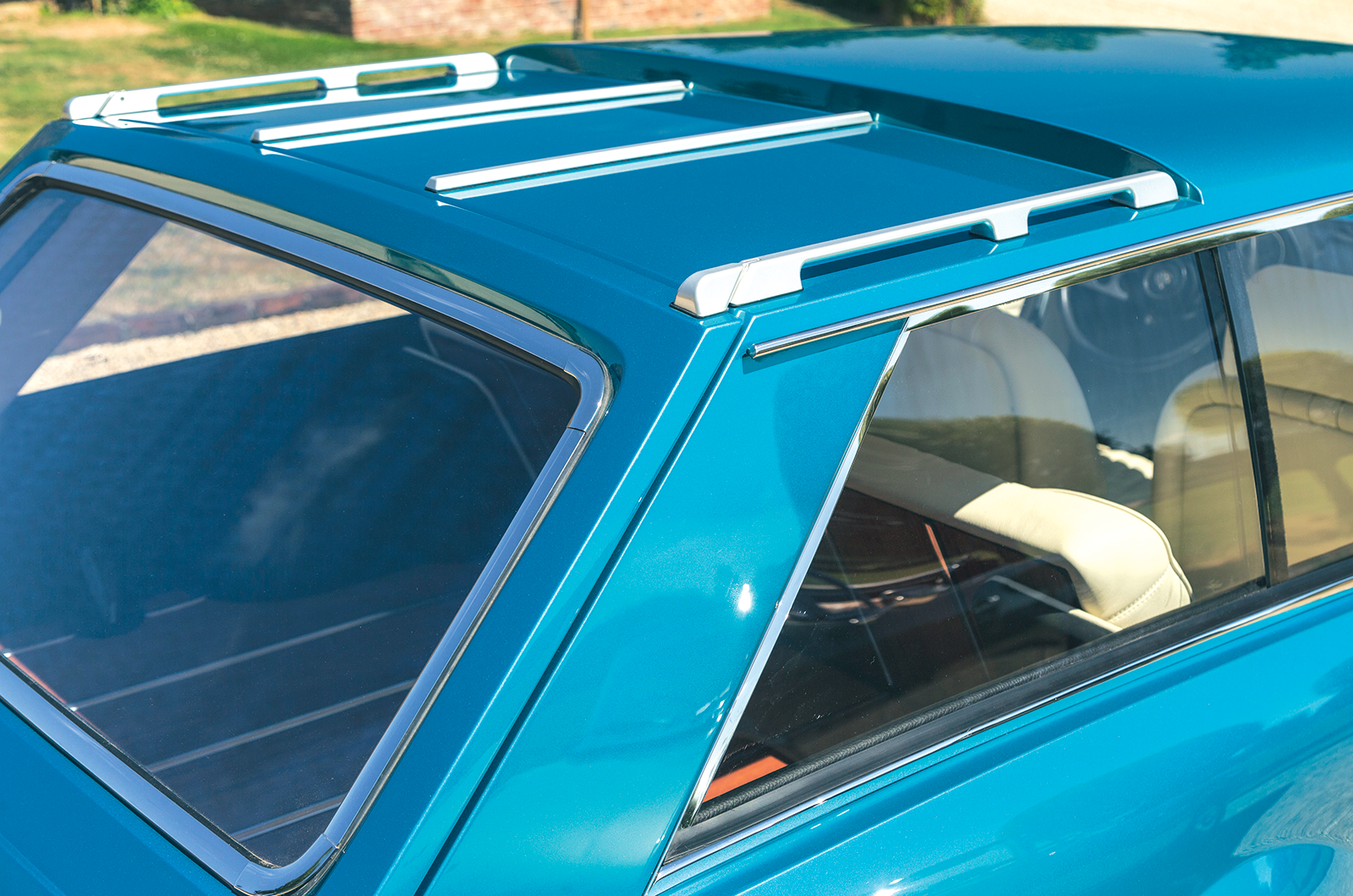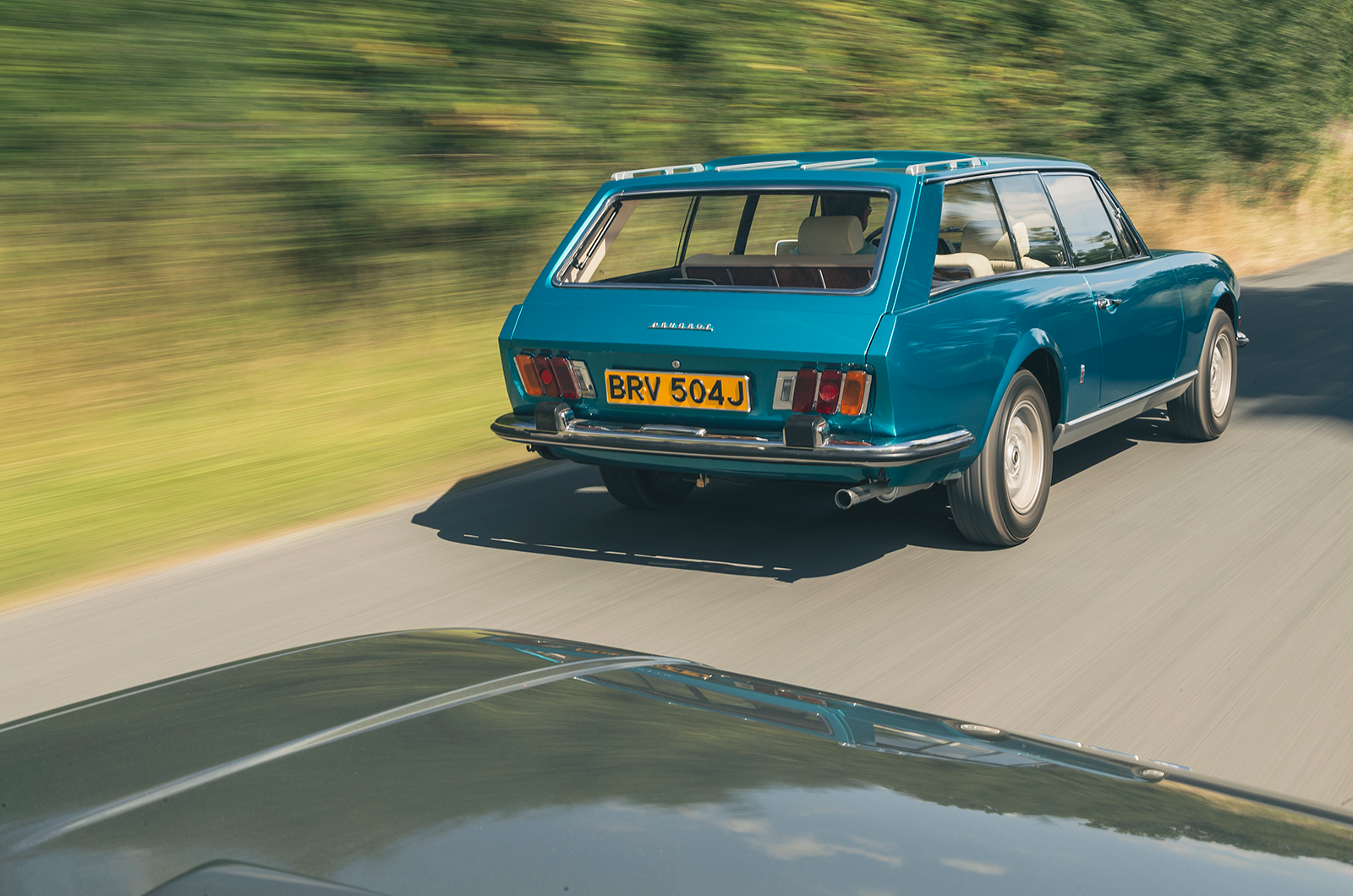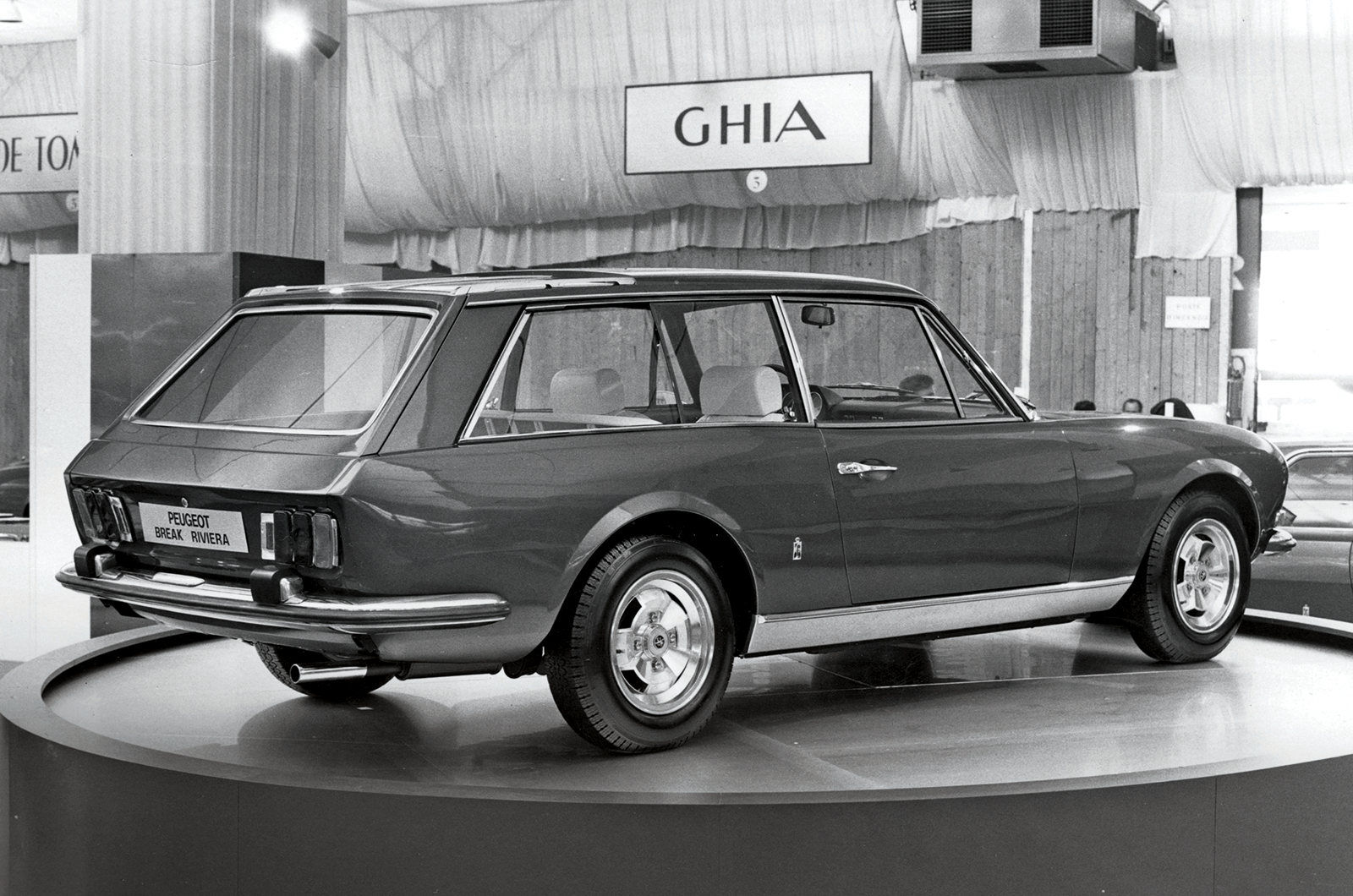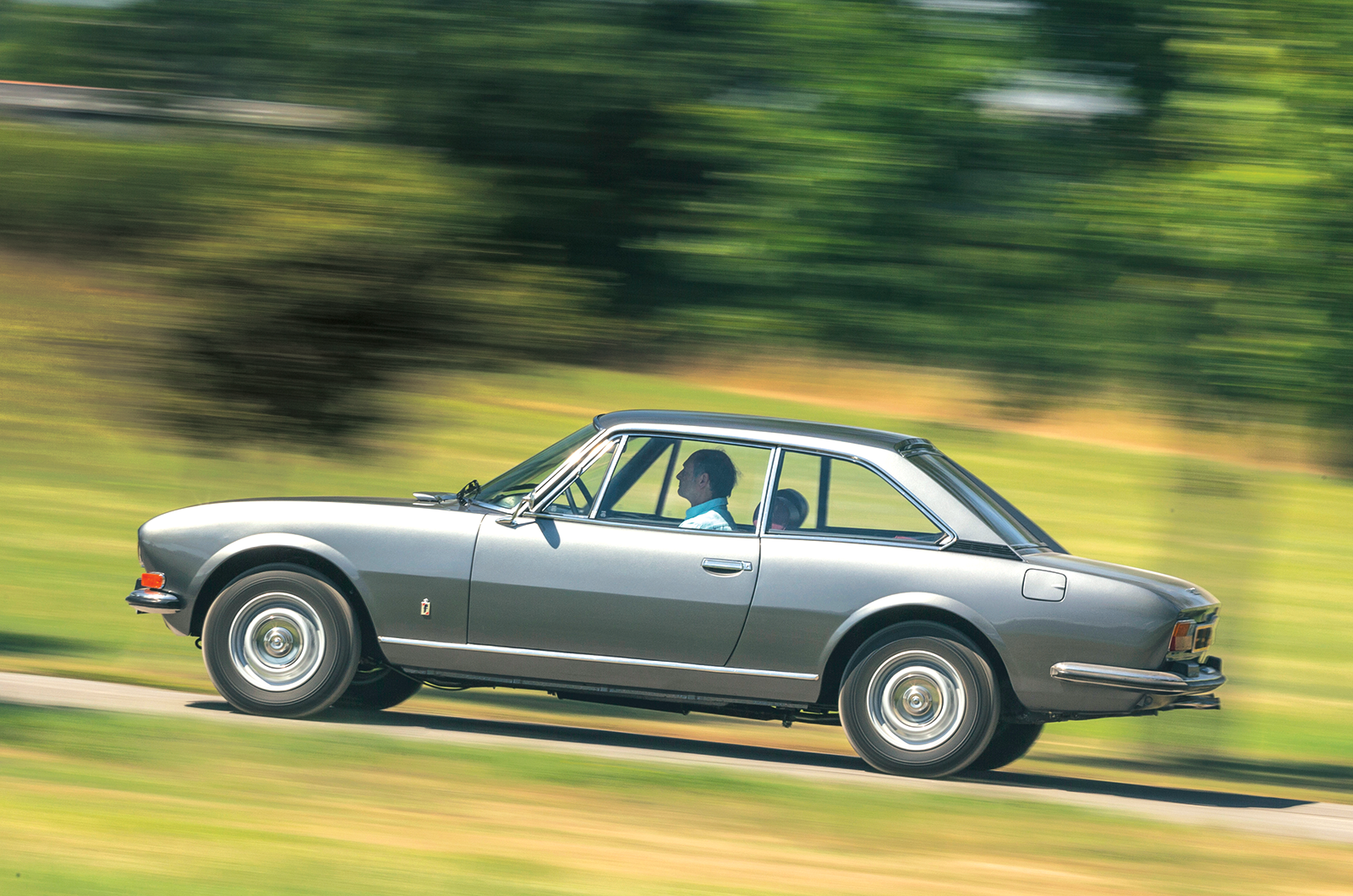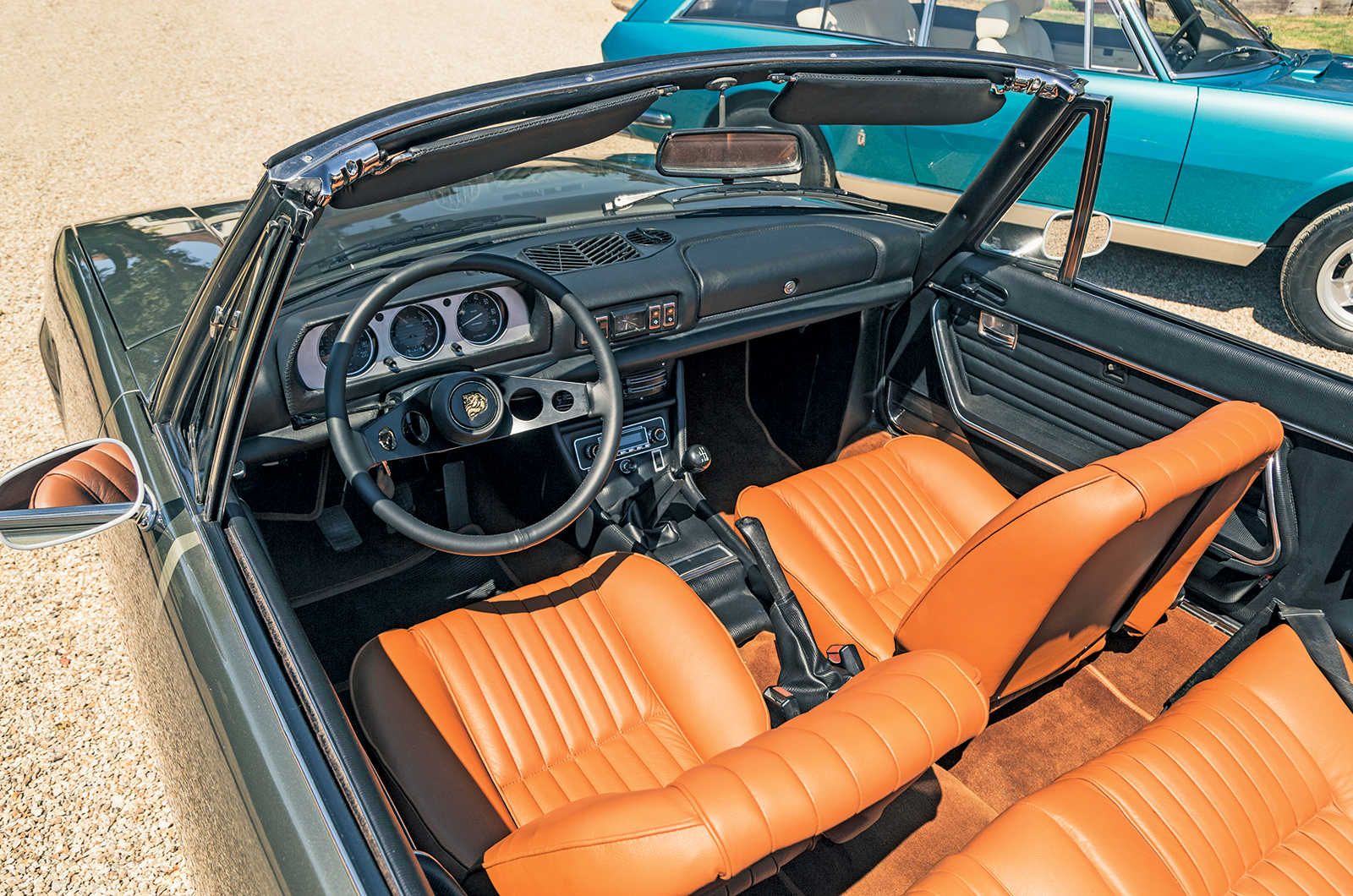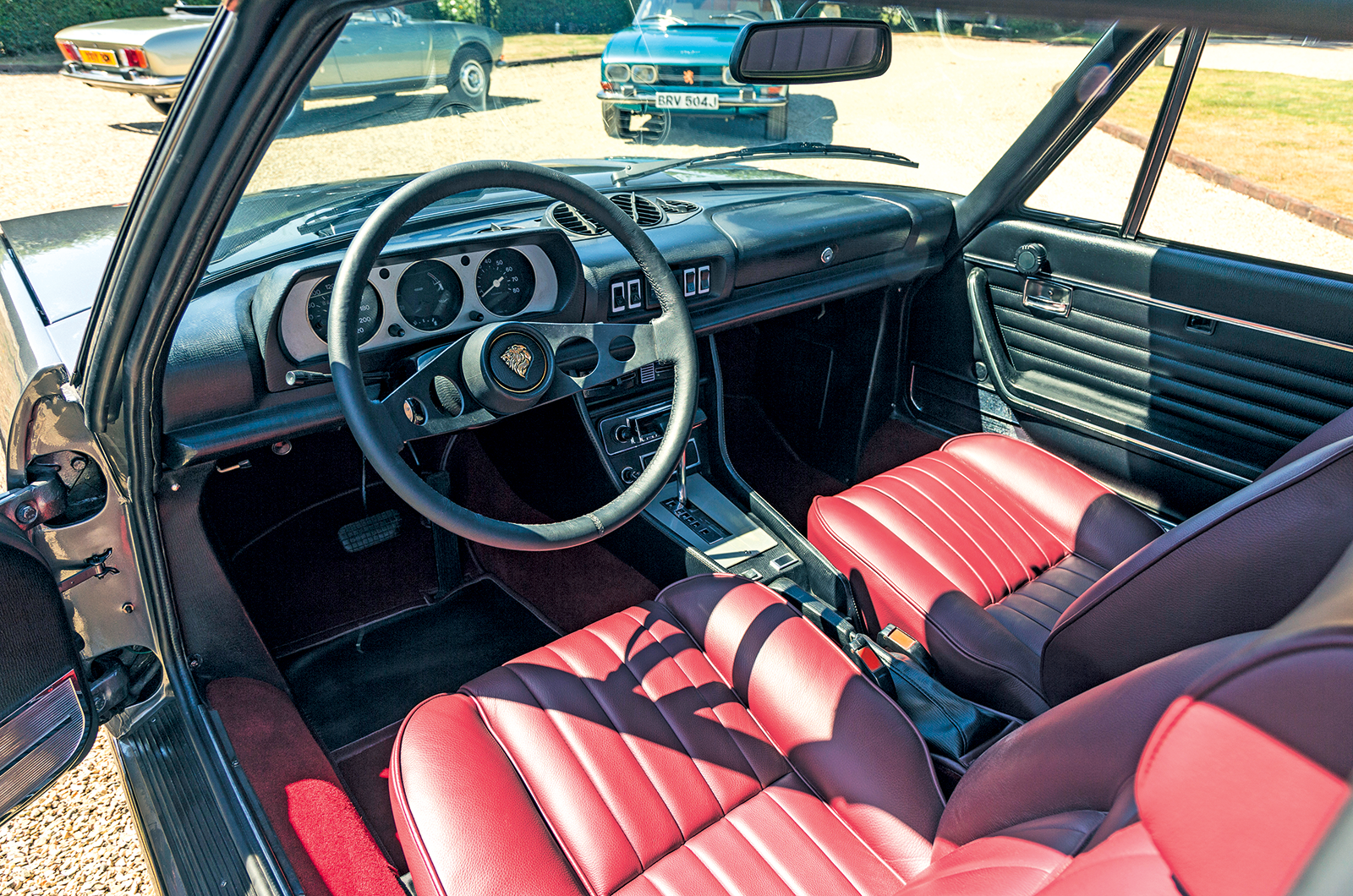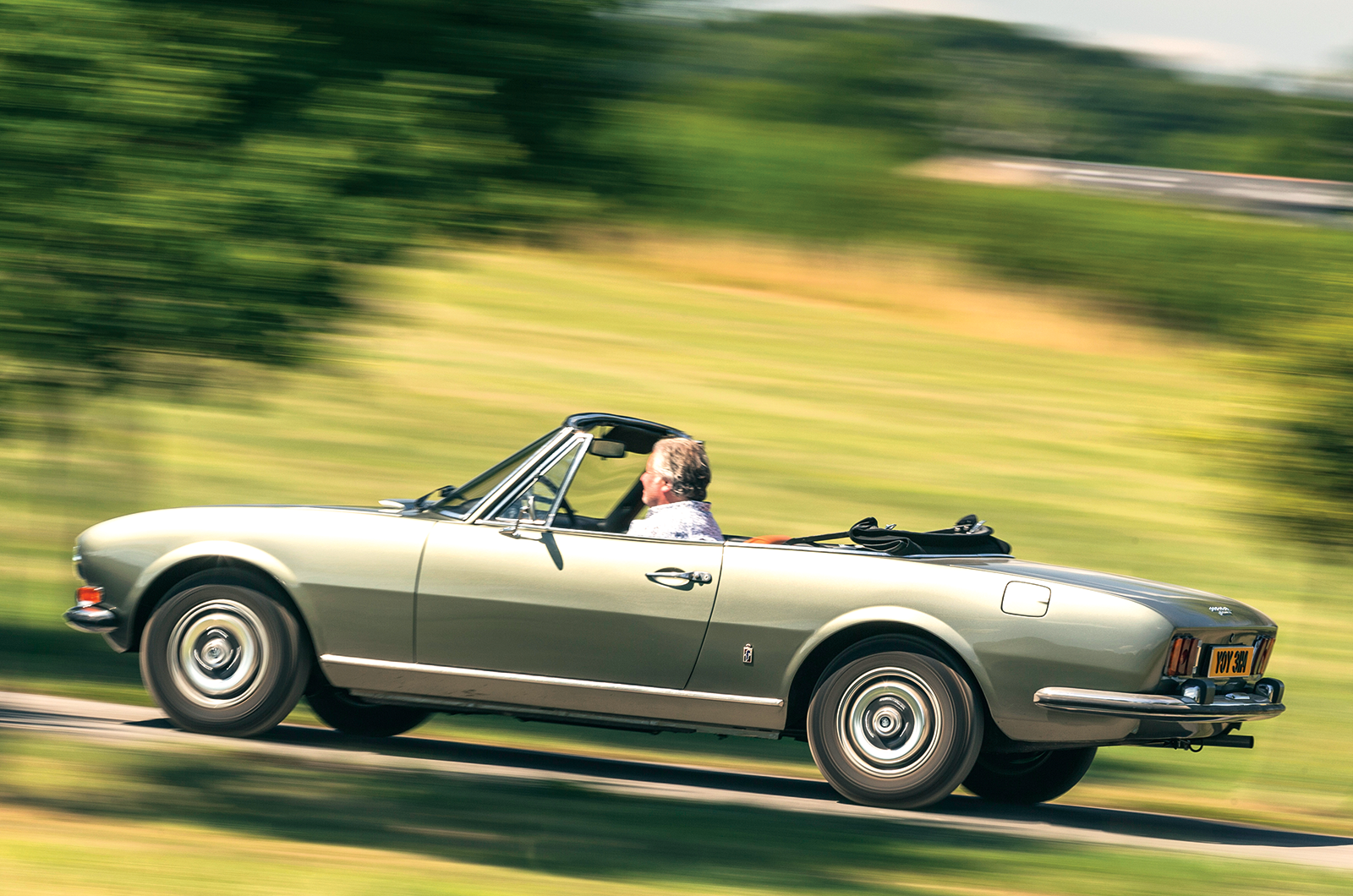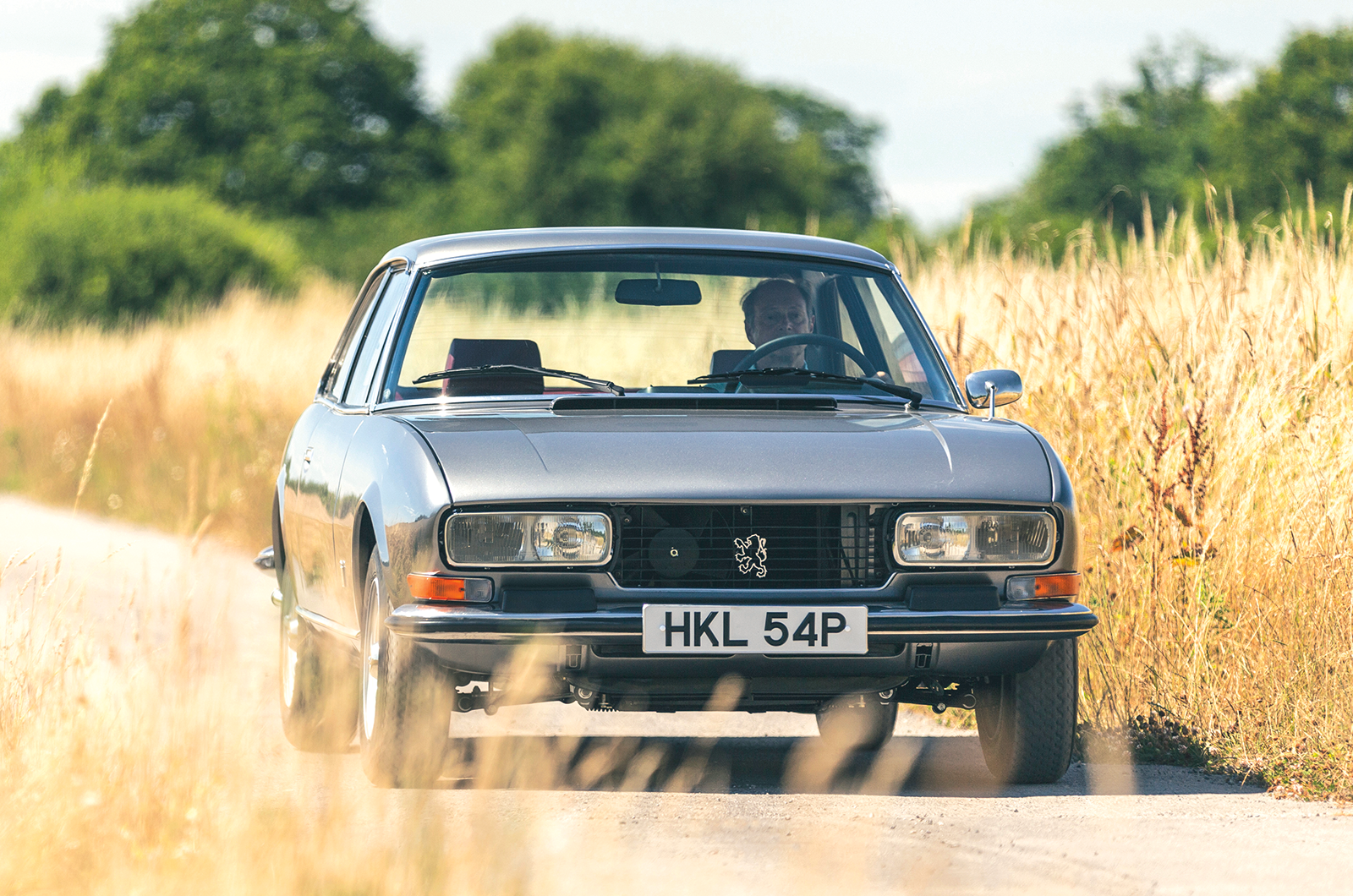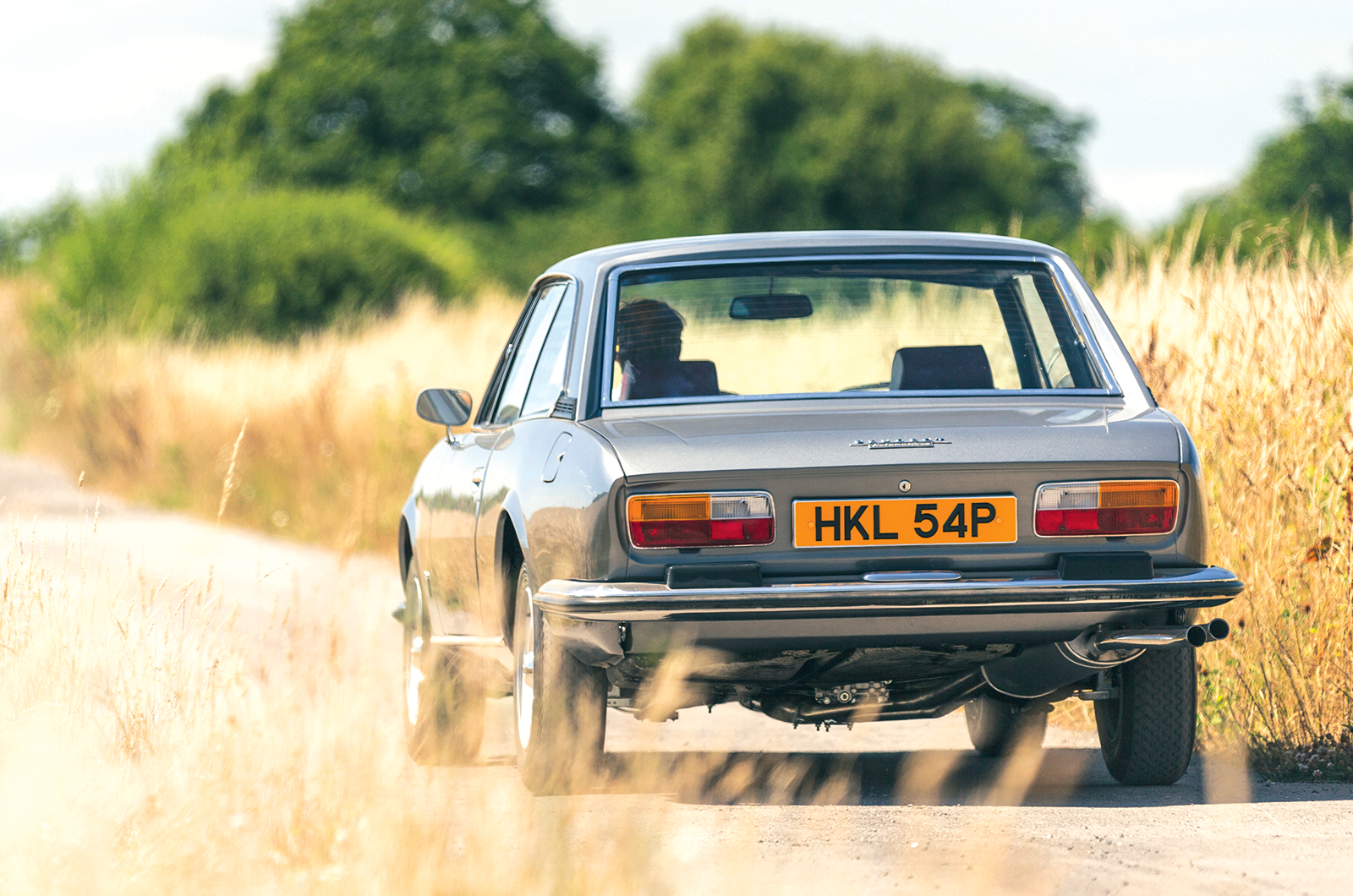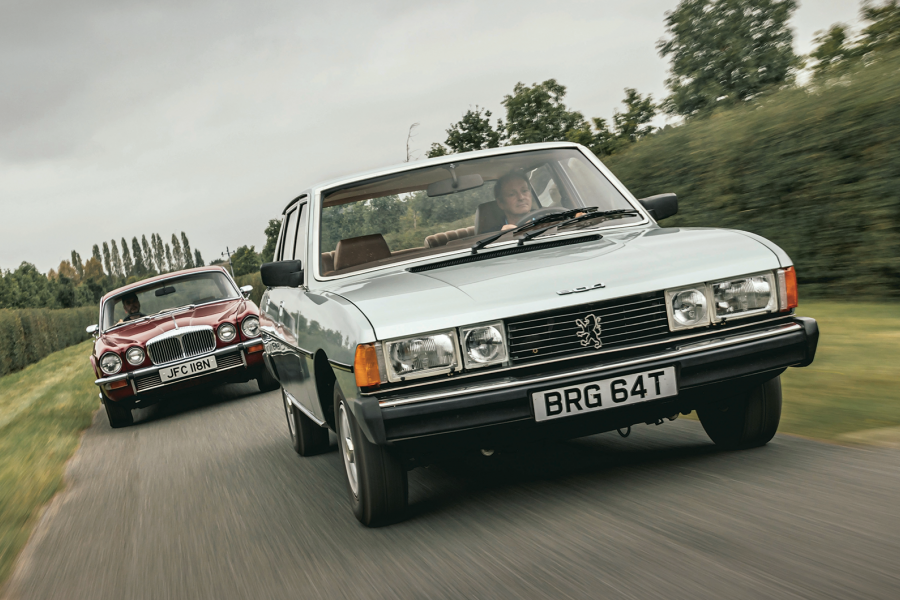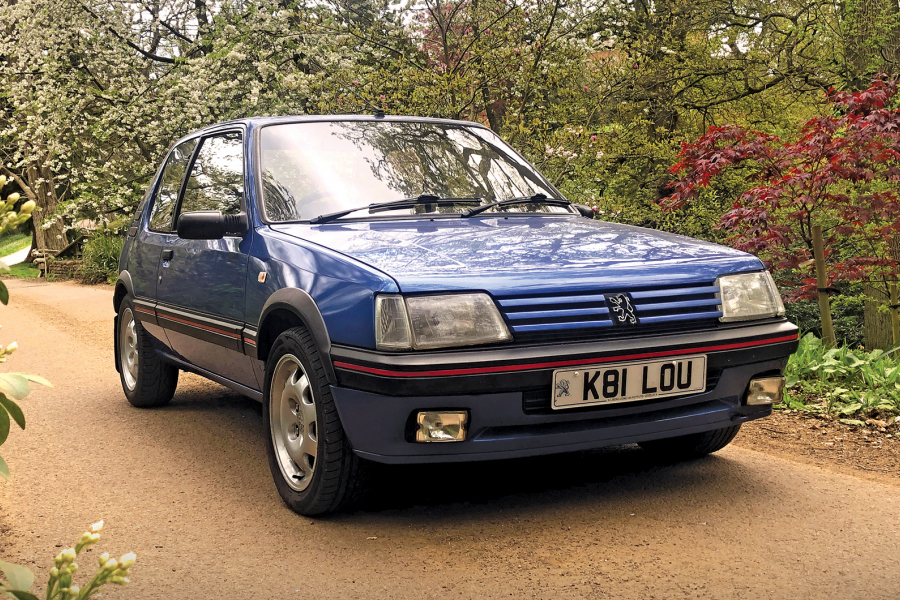In short, says Carp, the body was a lot more work than simply tacking on an estate-car back end: “Even just working out the design and function of the rear door, and how the struts and hinges operate, was very time-consuming.”
Mechanically the build was straightforward – although HC’s engineers did have to make a bespoke tool to extract the centre bearing in the torque tube.
Having produced the tooling, the firm could, in theory, build a second 504 Riviera, but Carp doesn’t look keen on the idea.
HC Classics’ 504 Break Riviera tribute (left) and an original four-cylinder Cabriolet
With cream leather trim throughout, and a leather-covered dashboard and door cards, the Riviera is probably subtly more plush than the original show car.
HC Classics has done a beautiful job of recreating the Riva speedboat-style, walnut-covered rear load deck, but has yet to come up with a solution for securing the rear bench in its upright position: the original car used a magnet.
Those beautiful four-bolt alloy wheels – apparently unique to the Break Riviera – were machined from scratch.
The Cabriolet’s early-style quad-lamp nose and delicate detailing set off the car’s clean lines
The Riviera is a new car to all intents and purposes: I’ve never before seen a 504 restored to this level, with a gleaming engine bay that even manages to make a pretty sight of Peugeot’s canted-over, cast-iron, overhead-valve ‘four’.
The 1976 V6 automatic Coupé and the late four-cylinder Cabriolet (with early-style lights) that HC has laid on for comparison belong to the same passionate 504 collector.
They come up to the same high standards of finish, in every detail, as the Break Riviera.
The 504 Coupé’s ‘Douvrin’ V6 makes for a relaxed cruiser, but adds little outright pace
The throaty, offbeat exhaust note of the carburettor-equipped V6 Coupé gives it an air of authority, but not much extra urge over its four-pot cousins.
With power steering and a ZF three-speed auto it has a gentle, wafty feel with the superb ride that’s common to all these cars.
The 2664cc engine was a short-lived option in the open car, but the torquey, mechanically injected four-cylinder in this one goes better than it sounds, particularly when mated to the five-speed manual gearbox.
The V6-powered Coupé features the later-style one-piece head- and tail-lights
The unassisted steering in these cars is not heavy (I’ve owned three), but the nicely weighted power assistance makes it a more pleasant car to drive and live with; the tight lock rivals a London cab.
Cabriolets in this sort of order are in the £50k bracket today, which, all things considered, is where they should be if Mercedes-Benz Pagodas are routinely twice that.
With its easy-to-use hood, supple comfort and civilised fixtures and fittings, all wrapped up in that delectable Italian shape, the 504 Cabriolet makes a good case for itself as an approachable alternative to the SL.
HC Classics isn’t tempted to build any more Peugeot 504 Break Rivieras
Of the three, in the metal, it is the Riviera that is the hardest to take your eyes off. It exudes the carefree charm of a certain kind of Continental ‘good life’, as lived in the Martini adverts of its day.
Svelte, sportif, yet useful – if only for carrying your Louis Vuitton hat-boxes – this is a car that always looks as if it’s about to motor down to a sunlit quayside to meet its owner’s yacht.
Pininfarina is apparently a bit sniffy about the existence of the Break Riviera tribute car, but I think it should be flattered that a private individual was enthused enough about this long-lost show star to lay out his own money on such a superb recreation.
Images: Luc Lacey
READ MORE
Don’t buy that, buy this: Peugeot 504 vs Mercedes Pagoda
21 forgotten Peugeot classics
Dream drop-tops: Aston vs Mercedes vs Citroën vs Jensen vs Rolls
Martin Buckley
Senior Contributor, Classic & Sports Car
